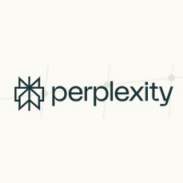Agentic AI Comparison:
Manus vs Perplexity Labs
Introduction
This report presents a comprehensive comparison between Perplexity Labs and Manus, two advanced AI agents, across five critical metrics: autonomy, ease of use, flexibility, cost, and popularity. The evaluation is based on user reviews, comparative analyses, and available documentation as of July 2025.
Overview
Perplexity Labs
Perplexity Labs specializes in deep research and analytical tasks, offering extensive capabilities for tasks such as coding, SEO audits, and complex data synthesis. It is recognized for producing highly detailed outputs, which are beneficial for in-depth projects but may overwhelm some users. Recent benchmarks note that Perplexity Labs tends to process tasks more slowly relative to some competitors, reflecting its focus on thoroughness.
Manus
Manus is a versatile AI agent developed in China, designed for rapid content generation, research, file deployment, and website creation. It stands out for its ability to handle a variety of tasks with fewer restrictions, delivering results quickly and with practical breakdowns. Manus is often noted for being efficient and easier to use for broadly scoped digital tasks.
Metrics Comparison
autonomy
Manus: 8
Manus is capable of rapid output generation and can complete a broader range of tasks with minimal oversight, aided by fewer system restrictions and streamlined directives.
Perplexity Labs: 7
Perplexity Labs can execute complex research and analytical operations with limited supervision, but sometimes delivers more detail than necessary, requiring user intervention to distill insights.
Manus exhibits stronger out-of-the-box autonomy due to its task flexibility and efficient execution, while Perplexity Labs offers depth but may require more user involvement in parsing outputs.
ease of use
Manus: 9
Manus emphasizes practical outputs with clear breakdowns, making it friendlier for users of varied skill levels and ensuring smoother adoption into workflows.
Perplexity Labs: 7
Users benefit from structured interfaces and comprehensive documentation, but may be overwhelmed by information density, which can hinder accessibility for less technical users.
Manus is perceived as easier to use, especially for non-specialists, while Perplexity Labs appeals more to users looking for exhaustive details.
flexibility
Manus: 9
Supports a wider set of use cases including research, website creation, and file deployment, without significant restrictions, enhancing its adaptability.
Perplexity Labs: 8
Offers extensive research and coding support, yet is primarily optimized for deep analytical tasks; some bottlenecks exist for real-time or creative generation.
Manus is more adaptable across diverse tasks, while Perplexity Labs specializes in in-depth research and analytics.
cost
Manus: 8
Offers strong value for extensive capabilities, with transparent pricing and a focus on accessibility, though advanced features might incur extra costs.
Perplexity Labs: 8
Pricing is competitive for the offered research and analytics depth, and it is considered affordable for its niche, but specifics depend on usage tier.
Both agents are considered cost-effective for their target audiences, with Manus potentially having an edge for general-purpose use due to its broader task range.
popularity
Manus: 7
Gaining traction, especially within the Chinese and Asian tech communities, but with somewhat less international visibility than Perplexity Labs.
Perplexity Labs: 8
Widely known in research and technical circles, with strong adoption among developers seeking exhaustive outputs.
Perplexity Labs is more recognized globally, while Manus is popular in specific regions and communities.
Conclusions
Perplexity Labs is best suited for users seeking deep, analytical capabilities and comprehensive research support, with strong technical backing but potentially slower outputs and higher information density. Manus stands out for its versatility, speed, and ease of use, making it an excellent choice for general-purpose digital tasks, rapid deployment, and users prioritizing workflow efficiency over depth. The choice between them should depend on the primary use case: exhaustive analysis versus agile, multi-task execution.

